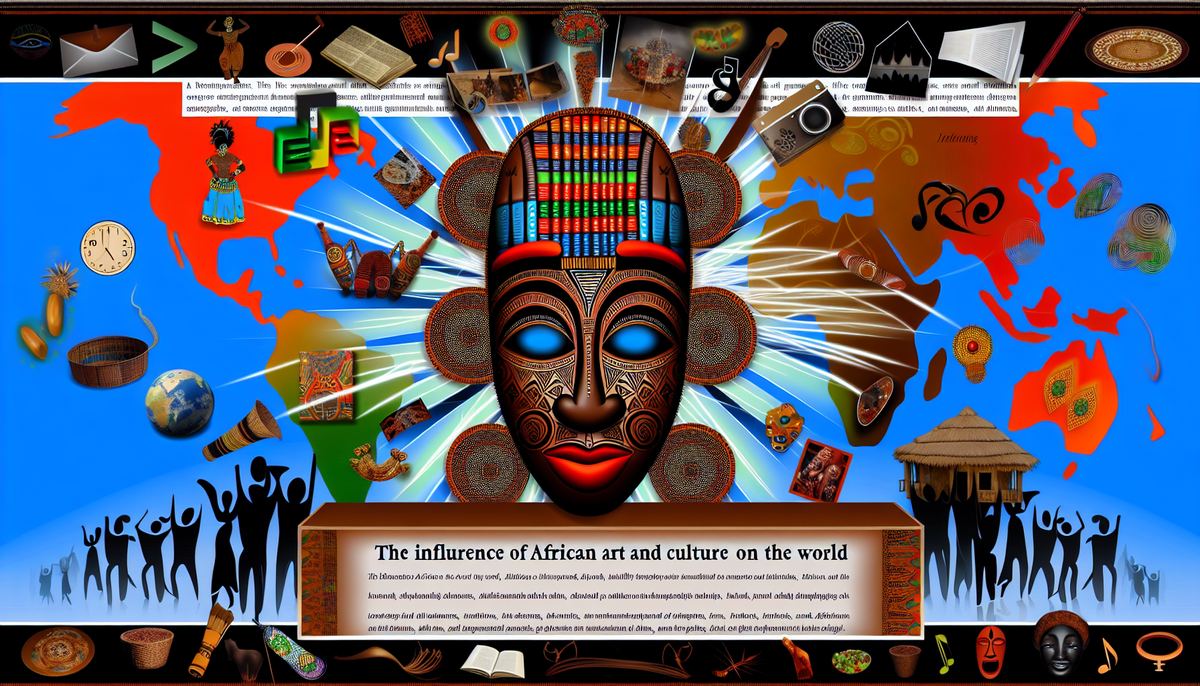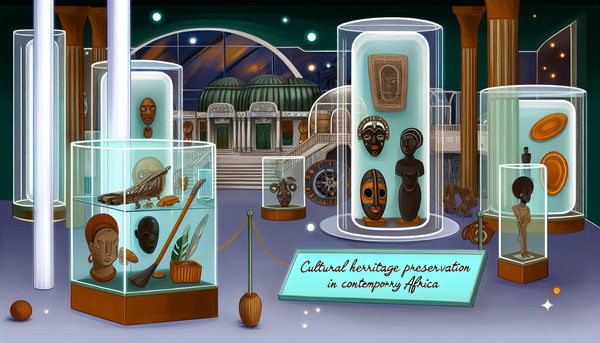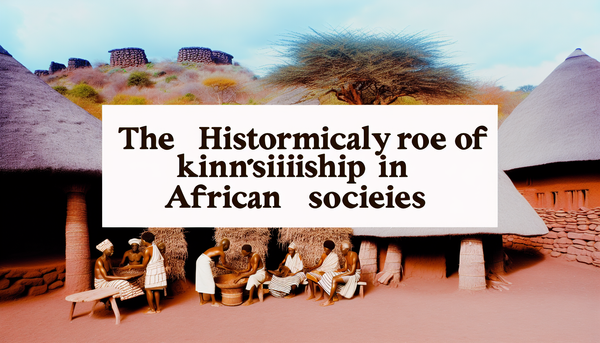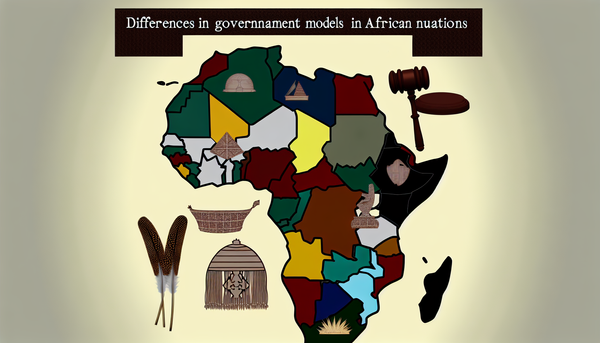The Influence of African Art and Culture on the World

The Global Impact of African Music and Dance Traditions
Over centuries, African music and dance traditions have captivated audiences worldwide, leaving an indelible mark on various cultures. The infectious rhythms and vibrant movements of African dances have heavily influenced contemporary music genres such as jazz, blues, reggae, and hip-hop. Artists like Miriam Makeba, Fela Kuti, and Salif Keita have transcended borders, sharing the rich sounds of Africa and promoting cultural exchange.
Furthermore, African dance forms like the energetic South African Gumboot dance or the graceful Rwandan Intore dance have inspired choreographers and performers globally, shaping the way we express emotions and tell stories through movement. The striking beats of traditional African drums and the melodic harmonies of indigenous instruments like the kora or mbira have found their way into mainstream music, adding depth and authenticity to modern compositions.
In essence, African music and dance continue to break barriers, fostering a deep appreciation for diversity and unity among people of different backgrounds. The legacy of these artistic traditions serves as a reminder of Africa's profound influence on the global creative landscape.
African Patterns and Symbols in Contemporary Fashion
The intricate patterns and symbolic motifs found in traditional African textiles have become a significant source of inspiration for contemporary fashion designers around the world. From vibrant Ankara prints to intricate Kente cloth designs, African fabrics imbue garments with a sense of cultural heritage and artistic flair. The use of bold colors and geometric shapes in African patterns adds a dynamic and unique element to modern clothing.
Moreover, symbols like Adinkra symbols from Ghana or Ndebele designs from South Africa often carry deep meanings related to spirituality, unity, and life experiences, infusing clothing with layers of significance beyond mere aesthetics. These symbols serve as a link to ancestral wisdom and a celebration of African identity in today's global fashion landscape.
In recent years, prominent fashion houses and designers have incorporated African-inspired elements into their collections, celebrating the diversity and beauty of African heritage. By embracing African patterns and symbols, contemporary fashion not only pays homage to traditional craftsmanship but also fosters a sense of cultural appreciation and inclusivity in the industry.
The Roots of African Storytelling in Modern Literature
African storytelling traditions, deeply rooted in oral history and cultural heritage, have played a pivotal role in shaping modern literature across the globe. From ancient folktales passed down through generations to contemporary novels exploring complex themes, the essence of African storytelling resonates in diverse literary works.
In traditional African societies, storytelling was a means of preserving history, sharing wisdom, and fostering communal connections. Griots, the oral historians and storytellers of West Africa, kept narratives alive through spoken word, music, and performance. These storytelling techniques, characterized by vivid imagery, rhythmic prose, and metaphorical language, have influenced renowned authors like Chinua Achebe, Chimamanda Ngozi Adichie, and Ngũgĩ wa Thiong'o.
The themes of identity, power dynamics, and the human experience central to African storytelling have found a place in modern literature, offering readers a glimpse into the rich cultural tapestry of the continent. Through incorporating elements of African oral tradition, contemporary writers are able to weave narratives that bridge the past with the present, creating immersive storytelling experiences that transcend borders and resonate with audiences worldwide.
Innovations in Art from Ancient African Civilizations
The art of ancient African civilizations is renowned for its remarkable innovations and sophisticated craftsmanship, setting the stage for artistic expression that continues to inspire to this day. From the intricate terracotta sculptures of the Nok culture in Nigeria to the iconic stone monuments of the Egyptian pharaohs, the artistic achievements of ancient Africa reflect a deep connection to spirituality, culture, and the natural world.
One of the pioneering innovations in African art is the mastery of symbolic representation, where intricate patterns, motifs, and sculptures conveyed complex narratives and spiritual beliefs. For example, the detailed relief carvings on the walls of the Great Temple of Ramses II in Abu Simbel, Egypt, depict scenes of military conquest and divine worship with impressive precision and artistry.
Furthermore, the use of innovative techniques such as lost-wax casting in metalwork, vibrant beadwork in adornments, and elaborate textiles in clothing showcased the ingenuity and creativity of ancient African artisans. These artistic innovations not only served decorative and ceremonial purposes but also laid the foundation for a visual language that continues to influence contemporary art forms around the world.
African Spiritual Practices and Their Worldwide Resonance
The spiritual practices of Africa encompass a rich tapestry of rituals, beliefs, and traditions that have deep roots in the continent's diverse cultures. African spirituality emphasizes a profound connection to nature, ancestors, and the divine, intertwining the physical and metaphysical realms in a holistic worldview. From divination ceremonies in West Africa to ancestor veneration rituals in Southern Africa, these practices reflect a harmonious relationship between humans and the spiritual forces that shape their lives.
In recent years, African spiritual beliefs and practices have gained global recognition and resonance, with people from various backgrounds seeking wisdom and healing from traditional African spiritual leaders and rituals. The principles of interconnectedness, community, and reverence for the natural world embedded in African spirituality offer a counterbalance to modern lifestyles characterized by disconnection and materialism.
Moreover, the rise of practices like meditation, energy healing, and mindfulness in the West has drawn inspiration from African spiritual traditions, recognizing the wisdom and efficacy of age-old practices in fostering holistic well-being. As the world continues to embrace diverse forms of spirituality, African traditions stand out for their authenticity, depth, and transformative power in nurturing the soul and fostering spiritual growth.
Contributions of African Culinary Techniques to Global Cuisine
African culinary traditions have made significant contributions to the global culinary landscape, influencing flavors, techniques, and dishes enjoyed worldwide. The diverse regions of Africa showcase a rich tapestry of ingredients, cooking methods, and flavor profiles that have captivated taste buds and inspired chefs internationally.
One of the most notable contributions of African cuisine to global gastronomy is the use of spices and herbs to create complex and flavorful dishes. From the spicy berbere blend in Ethiopian cuisine to the aromatic jollof rice in West Africa, African spices add depth and richness to a wide array of dishes.
Furthermore, cooking techniques like braising, stewing, and slow cooking, as well as the use of grains like millet, sorghum, and teff, have been embraced by chefs around the world for their ability to infuse dishes with unique textures and tastes.
The increasing popularity of African restaurants and street food vendors in global cities is a testament to the growing appreciation for African culinary heritage. As diners explore the bold flavors and vibrant colors of African cuisine, they are not only savoring delicious meals but also celebrating the diverse and complex culinary traditions that continue to shape the multifaceted world of food.
Influence of African Architecture on Building Designs Across Continents
African architecture, characterized by its diversity, innovation, and rich cultural heritage, has left a lasting impact on building designs across continents. From the mud-brick structures of Mali's Dogon people to the geometric patterns of Morocco's Islamic architecture, African buildings showcase a harmonious blend of functionality, aesthetics, and symbolism that inspire architects and designers globally.
One significant influence of African architecture on building designs is the use of natural materials and sustainable construction techniques. Traditional African dwellings, such as the circular huts of the Maasai in Kenya or the thatched roof houses of the Zulu in South Africa, emphasize a deep connection to the environment and local resources.
Moreover, the intricate carvings, vibrant colors, and decorative motifs found in African buildings have inspired contemporary architects to incorporate elements of African design into modern structures. From the use of adobe walls to the integration of courtyard layouts, the principles of African architecture continue to inform innovative building designs that prioritize cultural authenticity and environmental consciousness across continents.



